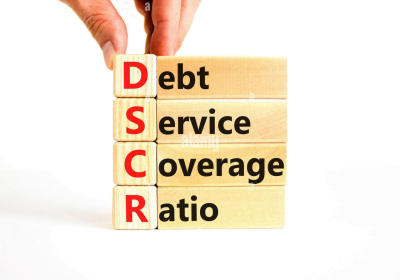
How claim management system ease your workflow
In the intricate realm of insurance, a well-designed claim management system acts as a silent ally, streamlining processes and alleviating the complexities associated with handling claims. This comprehensive guide explores how these systems, with their user-friendly interfaces and robust functionalities, seamlessly integrate into workflows, bringing efficiency, accuracy, and enhanced customer satisfaction to the forefront.
Centralized Data Accessibility:
A claim management system serves as a centralized hub for all relevant data. From policy details to claim history, having a singular repository ensures that information is easily accessible, reducing the time and effort spent searching through disparate systems.
Efficient Claim Intake:
Streamlining the claim intake process is a hallmark of effective claim management systems. With user-friendly interfaces and intuitive data entry, these systems facilitate quick and accurate submission of claims, initiating the workflow seamlessly.
Automated Documentation Handling:
Gone are the days of drowning in paperwork. Claim management systems automate documentation handling, ensuring that all necessary forms, images, and supporting materials are efficiently organized and readily available for review.
Real-Time Claim Tracking:
One of the standout features is real-time claim tracking. Insurers and clients alike can monitor the progress of a claim, promoting transparency and providing peace of mind as individuals stay informed about the status of their claims at every stage.
Enhanced Communication Channels:
Effective communication lies at the heart of the claims process, and claim management systems play a pivotal role by integrating advanced communication tools. These tools facilitate seamless interaction among insurers, clients, and third-party service providers. The integration ensures that communication is not only swift but also streamlined, expediting the entire resolution process.
Through these integrated communication tools, stakeholders can exchange information, updates, and documentation in real-time. This not only enhances efficiency but also contributes to a higher level of transparency and clarity in all interactions.
Automated Task Assignment:
Efficient task management is achieved through automated task assignment. Claim management systems intelligently assign tasks based on predefined rules, ensuring that each aspect of the claim process is handled by the most suitable team member or department.
Risk Assessment and Fraud Detection:
Incorporating advanced analytics, claim management systems contributes to risk assessment and fraud detection. By analyzing patterns and anomalies, these systems help identify potentially fraudulent claims, enabling insurers to take timely and informed actions.
Personalized Customer Experiences:
Modern claim management systems excel in delivering personalized customer experiences, a hallmark that elevates the insurance process. These systems go beyond transactional interactions, offering tailored communication preferences that resonate with individual clients. Through customized interfaces, users navigate the system seamlessly, encountering a user experience crafted to align with their specific needs.
This personalization extends to how information is presented and communicated, ensuring clarity and relevance. By prioritizing the client’s journey, these systems contribute to heightened satisfaction and foster customer loyalty. Clients feel not only understood but also catered to in a way that aligns with their preferences.
Integration with External Databases:
Seamless integration with external databases is a key strength of robust claim management systems. This integration ensures that insurers have access to the most up-to-date information, reducing the risk of errors and enhancing the accuracy of claims processing.
Compliance with Regulatory Standards:
Navigating the regulatory landscape is simplified with a claim management system designed to comply with industry standards. Adherence to regulatory requirements ensures that insurers operate within legal boundaries, mitigating the risk of penalties and legal complications.
Streamlined Settlement Processes:
Efficient settlement processes are a cornerstone of effective claim management. These systems automate calculations, ensuring accurate and prompt settlements, and reducing the time it takes for claimants to receive the compensation they are entitled to.
Data Security and Confidentiality:
With an increasing focus on data security, claims management solutions prioritize the confidentiality and integrity of sensitive information. Encryption protocols and secure access controls safeguard against unauthorized access, protecting both client and insurer data.
Customizable Reporting and Analytics:
Empowering insightful decision-making, claim management systems integrate customizable reporting and analytics features. These functionalities go beyond mere data storage, offering a dynamic toolset for insurers to extract meaningful insights. By generating detailed reports, these systems provide a comprehensive overview of claim patterns, processing times, and various metrics crucial to the insurance landscape. The ability to customize reports ensures relevance to specific organizational goals and challenges.
This data-driven approach enables informed decision-making, enhancing efficiency, mitigating risks, and ultimately contributing to the overall success of the claims management process. The adaptability and precision offered by customizable reporting within these systems represent a strategic advantage in navigating the complexities of the insurance industry.
Flexibility and Scalability:
Adaptability is a defining trait of effective claim management systems. These systems are designed to be flexible, accommodating changes in workflows and business processes. Additionally, their scalability ensures that the system grows alongside the organization, catering to evolving needs.
Paperless Environment and Sustainability:
Choosing a paperless approach in claim management not only streamlines processes but also champions sustainability. Embracing digital documentation within claim management systems minimizes the reliance on traditional paper-based methods. This eco-friendly shift aligns seamlessly with global initiatives promoting sustainable business practices. By opting for a paperless environment, organizations reduce their environmental footprint, contributing to the preservation of forests and ecosystems.
Claim management systems play a pivotal role in this transformation, offering a streamlined, efficient, and environmentally conscious alternative. Beyond operational benefits, this commitment to a paperless workflow showcases the organization’s dedication to social responsibility. It reflects a conscious effort to adopt practices that not only enhance efficiency but also contribute to a greener and more sustainable future, demonstrating a harmonious balance between technological advancement and environmental consciousness.
In essence, claim management systems represent a transformative force in the insurance landscape, revolutionizing the way claims are handled. From simplifying data access to fostering personalized customer experiences, these systems are instrumental in creating efficient, transparent, and resilient workflows for insurers and clients alike. As technology continues to evolve, the role of claim management systems will only become more central in shaping the future of insurance operations.

















